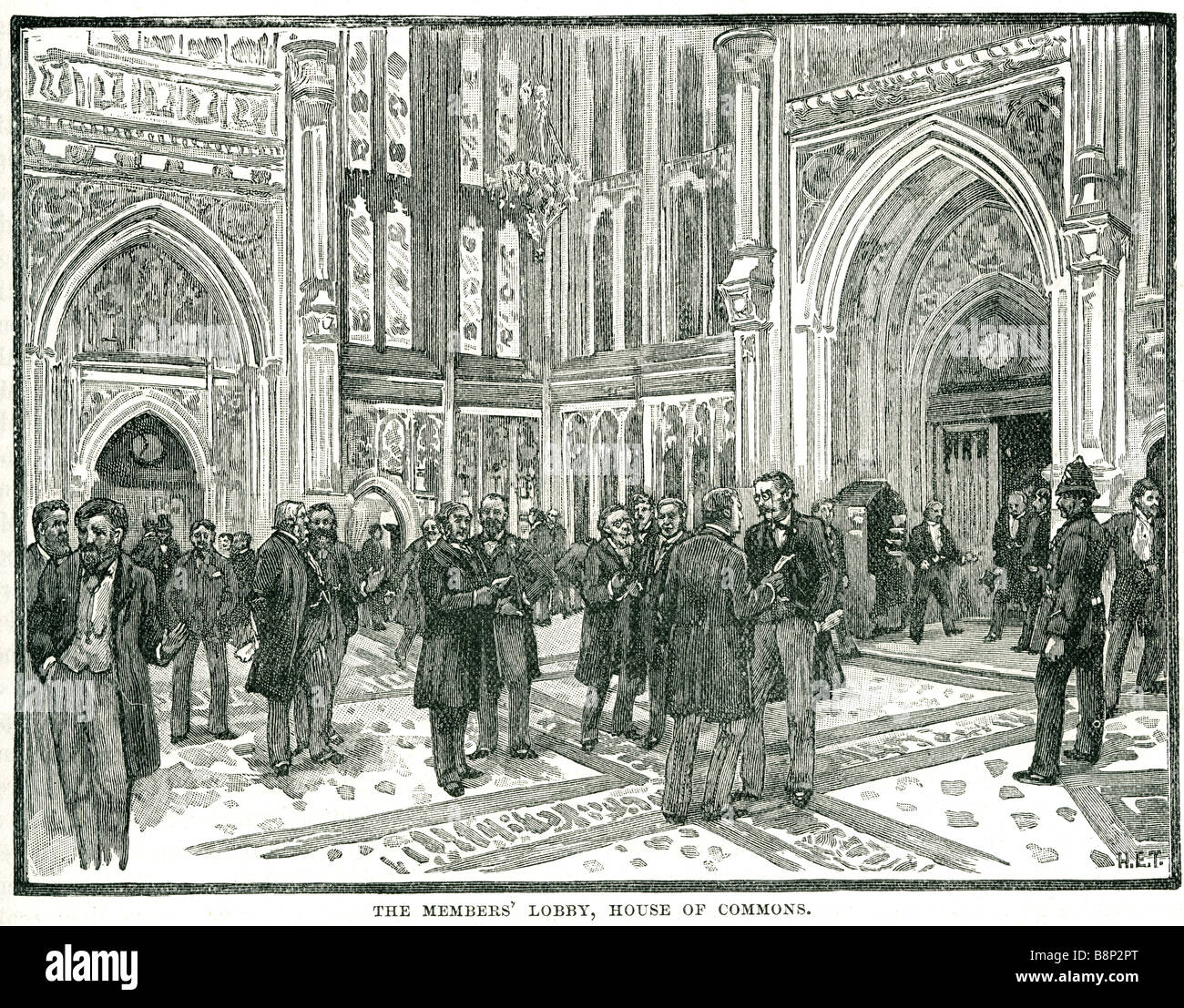Members lobby house of commons hallway Westminster Parliament United Kingdom

Image details
Contributor:
19th era / Alamy Stock PhotoImage ID:
B8P2PTFile size:
56 MB (7.4 MB Compressed download)Releases:
Model - no | Property - noDo I need a release?Dimensions:
5001 x 3913 px | 42.3 x 33.1 cm | 16.7 x 13 inches | 300dpiMore information:
Members' Lobby is a hallway in the Palace of Westminster used by members of the Parliament of the United Kingdom. Members of Parliament may congregate here for discussions while not dealing with other business. The Lobby is situated next to the House of Commons (the lower house), close to the central lobby, and is off-limits to members of the public during voting sessions. It hosts offices of government and opposition whips, who are responsible for organising voting along party lines. Former British prime ministers are honoured with statues and busts in the Lobby. The monuments include: Four bronze statues, located next to the main doors at either end of the Lobby, portraying David Lloyd George, Winston Churchill, Clement Attlee and Margaret Thatcher. Three stone statues, located next to the side doors, portraying Benjamin Disraeli, Arthur Balfour and Herbert Asquith. The fourth plinth in the set stands empty. Eight bronze busts around the walls at the southern end, of Ramsay MacDonald, Stanley Baldwin, Anthony Eden, Harold Macmillan, Alec Douglas-Home, Harold Wilson, Edward Heath and James Callaghan. The bronze statue of Thatcher was unveiled in February 2007, and placed close to the bust of her Conservative predecessor Edward Heath. The Commons Works of Art Committee is currently pursuing a project to commemorate all Prime Ministers to hold office since 1902; it is still planning the inclusion of monuments to the three who have yet to be recognised: Henry Campbell-Bannerman, Andrew Bonar Law and Neville Chamberlain. Heath, Callaghan and Thatcher are the most recent additions following a change in the rules on depiction in Parliament so as to allow representation within a person's lifetime, instead of at least 10 years after their death as was previously the case. Members' Lobby was restored after World War II as attested by the monogram of George VI on its doors. The bomb-damaged arch at the entrance to the Commons was retained as a r